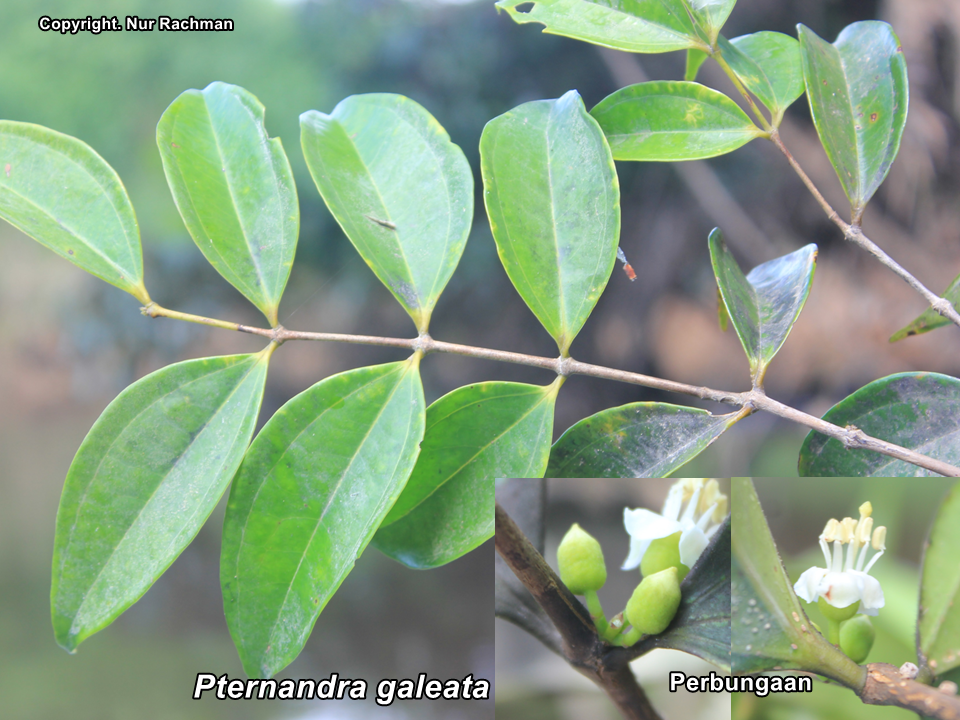Pternandra galeata
(Khorth.) Ridl.
Melastomataceae
Nama : Tiju.
Deskripsi : Perdu, jarang berupa pohon, tinggi dapat mencapai 15 m, diameter batang dapat mencapai 15 cm. Kulit batang halus, tipis, putih kecoklatan sampai keabu-abuan. Daun tunggal, menjangat, tersusun berhadapan; lonjong atau jorong; pangkal daun membundar sampai meruncing; ujung daun meruncing; tepi daun mengutuh; pertulangan utama rangkap-3, jelas, mencolok; permukaan daun licin dan gundul; permukaan atas daun hijau terang. Perbungaan tandan atau soliter, aksiler. Bunga biseksual; kelopak kecil, bercuping dangkal, berkanjang; mahkota putih kebiruan; organ kelamin tidak teramati. Buah buni, hijau sampai ungu kehitaman saat matang.
Ekologi : Persebaran alami dari Semenanjung Malaysia, Kalimantan. Pada umumnya tumbuh pada ekosistem dataran rendah di hutan primer atau hutan sekunder. Tumbuh pada hutan riparian, rawa, hutan kerangas, dan areal lahan terbuka akibat degredasi lahan. Jenis ini sering dijumpai pada habitat hutan lahan basa, tepi sungai dan lainnya. Referensi: Muklis et al., 2018.
Kegunaan : –

